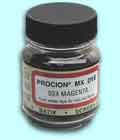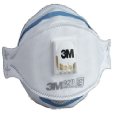Advertisements
Jacquard Procion MX Dyes can be purchased through Amazon

Fiber Reactive Dyes for Cotton, Silk, and Rayon
Advertisements
Jacquard Procion MX Dyes can be purchased through Amazon

Fiber Reactive Dyes for Cotton, Silk, and Rayon
Advertisements
Never reuse a dyepot for cooking food.

Always wear gloves while dyeing

Wear a dust mask or respirator while working with undissolved dye powders

No!
The rumor that fiber reactive dyes are used to color food or KoolAid is completely untrue.
While the toxicity of the Procion MX dyes is low enough that they are generally considered 'non-toxic', they have not been tested for human consumption. It is possible that consuming significant amounts of some of the Procion MX dyes would increase one's risk of cancer, just as with a number of colorings that were formerly allowed to be used in foods, but later found to be mildly carcinogenic and thus banned for this use.
Furthermore, it is quite dangerous to the lungs to breathe any fine powder, and some people have become allergic to Procion MX dyes as a result of having breathed in small quantities during their work with the dye powder. This is not uncommon among textile industry workers, and it could easily happen to you, too, if you are not careful about avoiding breathing even small amounts of dye powders. If you develop such an allergy - noticeable as a tightness in the chest upon further exposure - you will have to give up using this type of dye altogether. Always use a dust mask or respirator when working with dye powder, to avoid breathing any in, and promptly wipe up any spills of dye powder.
Fiber reactive dyes such as Procion MX are quite safe to use, as long as you never breathe them - use your dust mask when measuring out dye powder! - and never allow them to contaminate food or other things that you put in your mouth - wear gloves, and avoid eating or smoking with freshly dye-stained hands! (The dye stains are probably safe after the hands have been thoroughly washed, though.)
If you dye in an area also used for food preparation, first remove all uncovered foodstuffs, and cover all food preparation surfaces with layers of newspaper or other protection, before opening a jar of dye powder. Wipe down surfaces afterwards to catch any dye powder particles that have traveled through the air. I find that the following measures help prevent dye from flying around the room, and thus reduce the mess considerably: open the dye jars only in the bottom of a sink, or a box lined with dampened paper towels; mix the dye in water in containers in the bottom of the sink or box; and put the lids back on the dye powder jars before removing them from the sink. Have dye powder jars open only as long as necessary, and do not talk while measuring out the dye powder, because doing so stirs the air. If flying bits of dye powder are still a problem, consider turning off all fans briefly, just for the time during which you are measuring out the dye, so that any spattered bits of powder more easily fall to the bottom of the sink, instead of being blown around.
You certainly should always wear gloves when dyeing, but it seems unlikely that
spilled fresh fiber reactive dye will be absorbed through intact skin. Reactive dyes are typically not absorbed by living cells, according to Ivanov's Reactive Dyes in Biology, and reactive dye reacts quickly with the dead cells that normal skin always carries on its surface. Dye stains will
wear off within one to three days, when the outermost layer of
skin cells is shed. While a hand cleaner, ReDuRan, can be used,
not everyone finds it effective enough to be worth the trouble.
You should certainly not use bleach to remove the dye (bleach
is a far more hazardous chemical than the dyes!), but a loofah
or other scrubber is often quite helpful in removing dye from
the skin, simply by removing the dyed skin cells.
As far as the skin itself is concerned, the slightly caustic property of the sodium carbonate used to fix the dye is a greater concern. Tie-dyeing without gloves sometimes results in somewhat painful splits in the skin all over the hands, afterwards, as the result of the high pH of the soda ash, which turns natural skin oils into soap, resulting in sigificant drying of the skin. Washing, or at least wiping, the soda ash solution off of the skin immediately after a spill can prevent this discomfort, and help to reduce breaks in the skin that might increase the dangers of other chemicals.
Always ask your dye supplier for the MSDS (Materials Safety Data Sheet) for each of the dyes which you are going to use, and follow the indicated precautions.
 Back to list of FAQs
Back to list of FAQsAll of the pages on this site are copyright ©1998‑2026 Paula E. Burch, Ph.D.
Last updated: August 12, 2011
Page created: Saturday, September 18, 1999
Downloaded: Tuesday, January 06, 2026